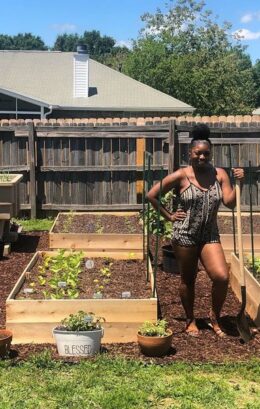“Gardening is the most therapeutic and defiant act you can do, especially in the inner city. Plus, you get strawberries”.
-Ron Finley-
Edible Landscapes
Last week, Earth day was celebrated with posts on social media that affirmed and promised a renewal of commitment to making Earth a better place for all .
Taking a day to celebrate the planet we call home, also highlighted how Public Health can be a connecting device between improving population health and learning about the natural environment around us. This tied in nicely with the month of April’s theme for All Things Public Health, which was Public Health Nutrition.
Discussions around nutrition and its use opened up a larger conversation about what Public Health Nutrition is and how it can be introduced, and practiced in communities across the globe.
For the concept of Public Health Nutrition to work, one needs to understand that it is centred around the idea of preventing disease, prolonging life and promoting health through the medium of nutrition.
With this in mind, we can start thinking about how communities can create spaces that encourage health through nutrition.
This is where the idea of ‘edible landscapes’ comes in. An edible landscape (also known as a foodscape) is the use of food-producing plants in a residential landscape. It combines fruit and nut trees, berry bushes, vegetables, herbs, edible flowers, along with ornamental plants into aesthetically pleasing designs.
Pam Warhurst, a British community leader, activist and environment worker, has shown that edible landscapes can be used for engaging everyone in the community in taking small cumulative actions toward inclusive community development, resilience building, and economic regeneration.
Essentially, these are community gardens where people can grow nutritious food while learning about the environment. These are gardens are not only aesthetically pleasing, they contribute to the area’s food security and they promote sustainable living.
Creating foodscapes may seem a little ambitious for some low-income populations, but as Pam Warhurst has shown us, you only need your community and a few seeds to start. And from there, the project will flourish.
Access to great nutrition can mean improving the health of a community, and that is one edible landscape away. Look around your community today. Do you think you could start a community garden?




